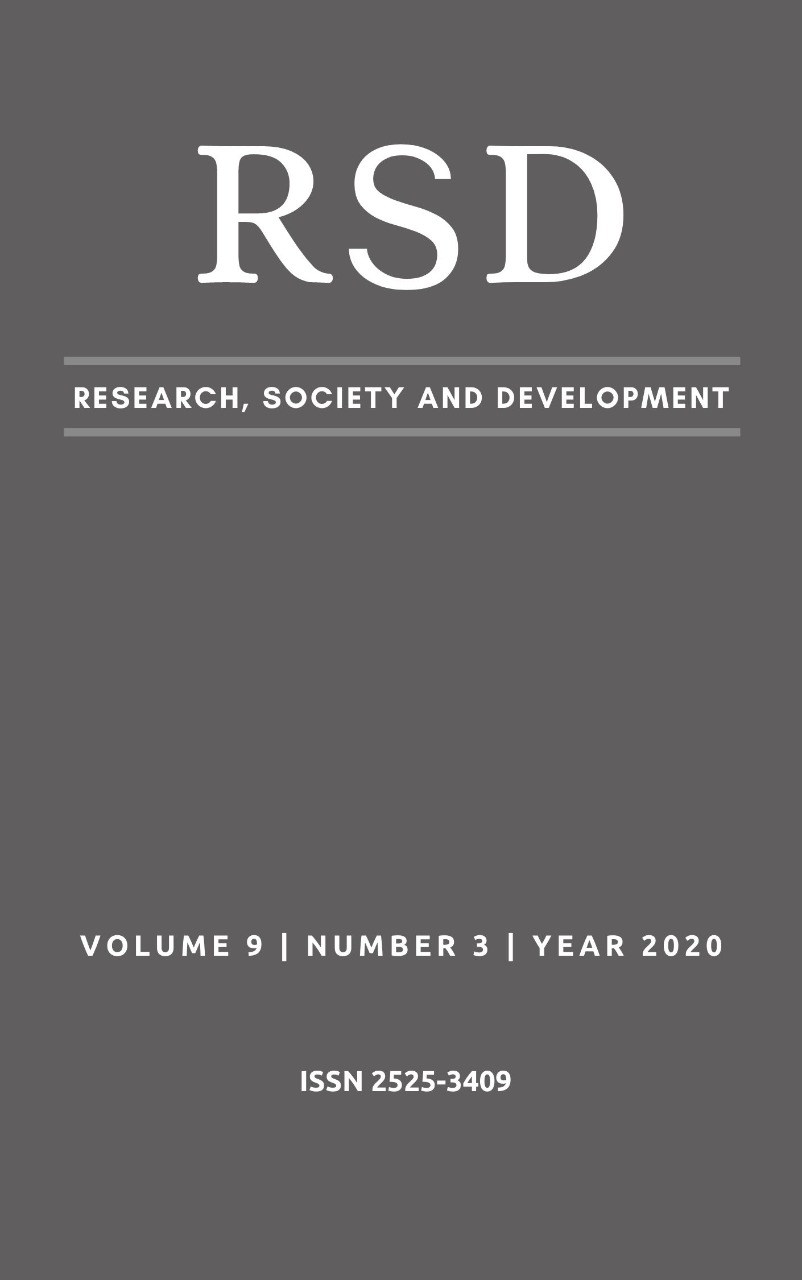Contribuições do uso do software GeoGebra no estudo da derivada
DOI:
https://doi.org/10.33448/rsd-v9i3.2611Palavras-chave:
Educação matemática, Derivada, Taxa de variação, GeoGebra.Resumo
Este trabalho apresenta resultados de uma pesquisa que trata do estudo da derivada como taxa de variação por meio do software GeoGebra, realizado com acadêmicos do Instituto Federal de Educação, Ciência e Tecnologia do Norte de Minas Gerais (IFNMG), Campus Januária. Para a realização da pesquisa, foi oferecido um minicurso, realizado no laboratório de Matemática da instituição, que teve como objetivo verificar como as tecnologias digitais e o software GeoGebra podem contribuir no processo de ensino e aprendizagem dos conceitos de taxa de variação e derivada. Como metodologia foi adotada uma abordagem qualitativa, pois procurou-se identificar a percepção e a experiência dos participantes durante o desenvolvimento do minicurso. Assim, percebeu-se que a utilização do software GeoGebra como recurso didático, torna o aprendizado e o estudo da derivada como taxa de variação mais fácil e viável de ser compreendido, e não somente através das mídias lápis e papel na sala de aula, para ensinar estes conteúdos, podendo assim contribuir de forma significativa no estudo do tema e consequentemente na Educação Matemática. Constatou-se que a utilização do software GeoGebra como recurso didático, permite que o ensino da derivada como taxa de variação pode facilitar o processo de ensino e aprendizagem.
Referências
Almeida, S. N. (2013). Software livre no ensino de matemática: possíveis contribuições. 41 f. Monografia (Licenciatura em Matemática) – Instituto Federal de Educação, Ciência e Tecnologia do Norte de Minas Gerais – Campus Januária
Borba, M. C. & Penteado, M. G. (2010). Informática e educação matemática. 3ed. Belo Horizonte: Autêntica.
Creswell, J. W. (2010). Projeto de pesquisa: Métodos qualitativo, quantitativo e misto. 3ed. São Paulo, Artmed.
Fiorentini, D. (org.) (2003). Formação de professores de matemática, explorando novos caminhos com outros olhares. Campinas, Mercado de Letras.
Lévy, P. (2001). As tecnologias da inteligência: O futuro do pensamento na era da informática. Rio de Janeiro, Ed. 34.
Ludwig, A. C. (2012). Fundamentos e prática de metodologia científica. 2ed. Petrópolis, Vozes.
Macêdo, J. A., Almeida, S. N. & Voelzke, M. R. (2016). Descrições de programas livres e gratuitos para o ensino da matemática. Revista Abakós, Belo Horizonte (MG), 4 (2), 3-19. DOI: https://doi.org/10.5752/P.2316-9451.2016v4n2p3
Macêdo, J. A., Nunes, T. C. S. & Voelzke, M. R. (2015). Objetos de aprendizagem no estudo de tópicos de matemática. Revista Tecnologias na Educação, 7 (13), 1-10.
Macêdo, J. A. & Santos, A. C. F. (2019). Estudo de funções transcendentes usando o software GeoGebra. Revista de Educação, Ciências e Matemática, 9 (1), 62-78.
Masetto, M. T. (2006). Mediação pedagógica e o uso da tecnologia. In: Moran, J. M., Masetto, M. T. & Behrens, M. A. Novas tecnologias e mediação pedagógica. São Paulo: Papirus, Cap.3; 133-172.
Mouzine, T. A. D. & Soares, C. S. (2011) Desenvolvimento e avaliação de sistema multimídia para ensino e aprendizado em topografia. In: Sousa, R. P., Moita, F. M. G. S. C. & Carvalho, A. B. G. (orgs). Tecnologias digitais na educação. Campina Grande, Eduepb.
Pereira, A.S. et al. (2018). Metodologia da pesquisa científica. [e-book]. Santa Maria. Ed. UAB/NTE/UFSM. Disponível em: https://repositorio.ufsm.br/bitstream/handle/1/15824/Lic_Computacao_Metodologia-Pesquisa-Cientifica.pdf?sequence=1. Acesso em: 05 fev. 2020.
Purificação, I. C. & Neves, T. G., Brito, G. S. (2010). Professores de matemática e as novas tecnologias: medo e sedução. In: Beline, W. & Costa, N. M. L. (Orgs). Educação matemática, tecnologia e formação de professores: algumas reflexões. Campo Mourão: Editora da FECILCAM.
Santos, A. C. F. & Macêdo, J. A. (2013). A utilização das tecnologias digitais na formação inicial de professores de matemática e física. Anais do XI Encontro Nacional de Educação Matemática, Curitiba, 1-16.
Santos, A. C. F. & Macêdo, J. A. (2015). Uso dos softwares GeoGebra e winplot no estudo de funções transcendentes. REVEMAT - Revista Eletrônica de Educação Matemática, Florianópolis (SC), 10 (2), 155-166.
Serafim, M. L. & Sousa, R. P. (2011). Multimídia na educação: o vídeo digital integrado ao contexto escolar. In: Sousa, R. P., Moita, F. M. G. S. C. & Carvalho, A. B. G. (orgs). Tecnologias digitais na educação. Campina Grande, Eduepb, 19-51.
Stewart, J. (2016). Cálculo: volume 1. 8. ed. São Paulo, Cengage Learning.
Thomas, G. B. (2009). Cálculo: volume 1. 11. ed. São Paulo, Addison Wesley.
Thomas, G. B. (2012). Cálculo: volume 1. 12. ed. São Paulo, Pearson Education do Brasil
Downloads
Publicado
Edição
Seção
Licença
Autores que publicam nesta revista concordam com os seguintes termos:
1) Autores mantém os direitos autorais e concedem à revista o direito de primeira publicação, com o trabalho simultaneamente licenciado sob a Licença Creative Commons Attribution que permite o compartilhamento do trabalho com reconhecimento da autoria e publicação inicial nesta revista.
2) Autores têm autorização para assumir contratos adicionais separadamente, para distribuição não-exclusiva da versão do trabalho publicada nesta revista (ex.: publicar em repositório institucional ou como capítulo de livro), com reconhecimento de autoria e publicação inicial nesta revista.
3) Autores têm permissão e são estimulados a publicar e distribuir seu trabalho online (ex.: em repositórios institucionais ou na sua página pessoal) a qualquer ponto antes ou durante o processo editorial, já que isso pode gerar alterações produtivas, bem como aumentar o impacto e a citação do trabalho publicado.


